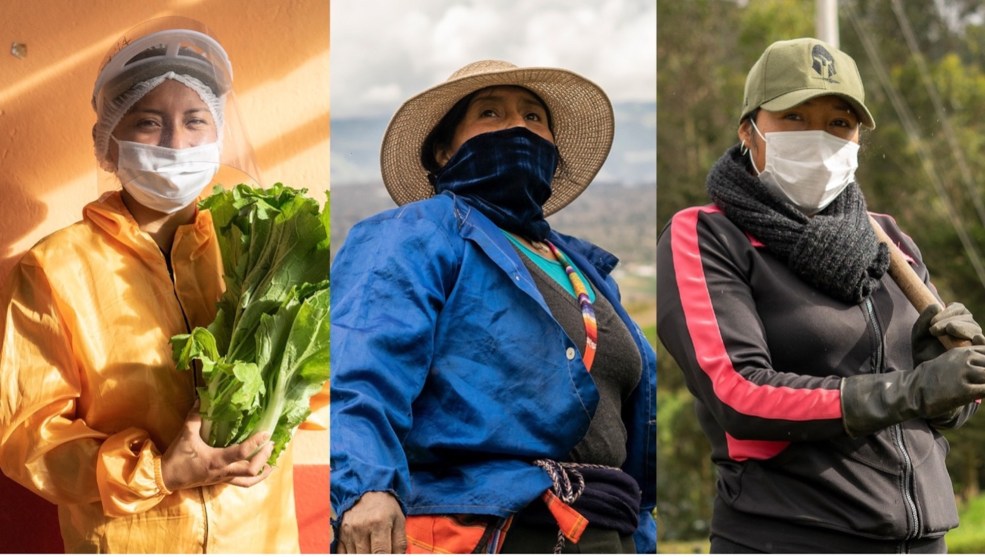
Heifer International
This content was written by Heifer International, and paid for by Heifer International; it was not written by and does not necessarily reflect the views of Mother Jones' editorial staff. See our advertising guidelines to learn more.
March 11 marked a grim milestone: one year since the World Health Organization declared COVID-19 a pandemic. Since then, people around the world have been living in some type of imposed quarantine. It’s been a year marked by hardship and loss—personal, familial, economic—and the toll on marginalized populations, including people living in poverty, has been pronounced.
Close quarters and lack of access to health care, sanitation, and nutrition are a recipe for spreading disease, making poor communities especially vulnerable to pandemics. As the effects of COVID-19 continue to unfold, we’ve seen a rise in global poverty for the first time in more than 20 years, along with threats of a global food shortage.
Farmers are addressing these shortages.
At Heifer International, border closings, travel restrictions, and lockdowns have meant project work was either halted or at the least stymied. All the while, farmers and food producers in our projects have found themselves on the front line of this crisis, working to make sure consumers continue to have access to safe, healthy, nutritious food.
This is the first time many customers are giving more than a second thought to the people who grow their food, said Rosa Rodríguez, Heifer Ecuador country director.
“This crisis showed us that food producers are first responders, just like doctors and nurses, because they guarantee people’s health by delivering nutritious and safe food,” she said.
But as food and supply chains and other agricultural systems continue to change and break down, farmers face extra challenges in an already challenging environment. Despite the obstacles, farmers are finding innovative ways to survive both the COVID-19 pandemic and the pandemic that is poverty.
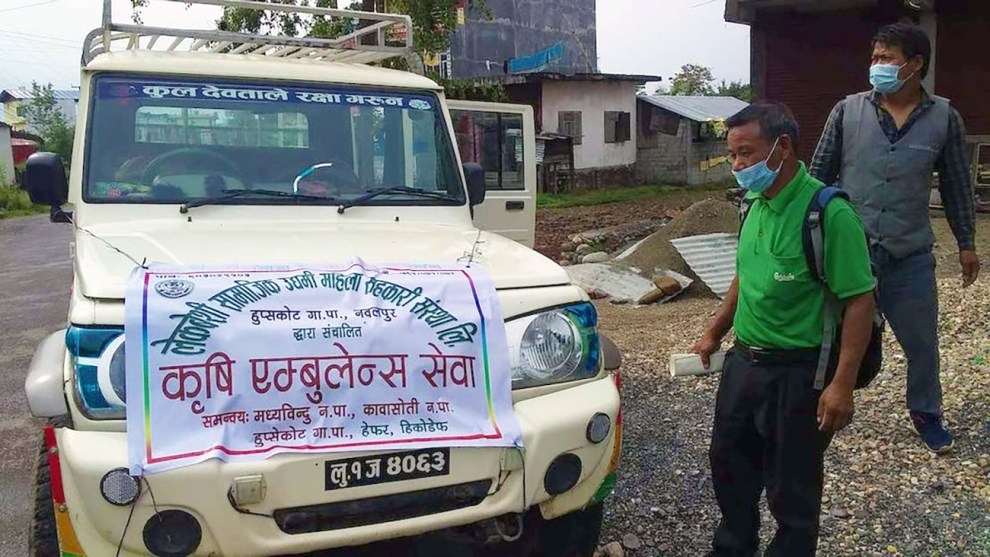
The agri-ambulance connects struggling farmers to isolated customers during Nepal’s lockdown, serving as a win-win for both sides.
Heifer International
New Addition to the Front Lines: The Agri-Ambulance
When Nepal entered lockdown, the majority of farmers’ produce was not making its way to market. Vegetables in particular were rotting or withering away, along with farmer incomes. Determined to help, one farming cooperative in Nawalpur came up with a means to collect and sell the fresh produce: by using an “agri-ambulance.”
The cooperative acquired a transport pass from the Nepali government and started collecting vegetables from the farmers, all while social distancing and adhering to national protocols. Farmers who make their livelihoods selling vegetables but who lack transportation or cold storage facilities never thought they’d be able to market their produce during the lockdown.
“We had never felt so helpless,” farmer Moti Sara Saru said, noting that the lockdown began as soon as the vegetables were ready for picking.
“When the cooperative began the ambulance service and began going from door to door collecting the vegetables and handing us our money, we felt as though a guardian had come to our rescue,” she said.
The agri-ambulance’s services have been a win-win for both struggling farmers and isolated customers in the surrounding region. On the first day of operation, the ambulance transported more than 770 pounds of vegetables to the market.
When Kam Maya Thapa heard about the service, she was thrilled. “To be able to have fresh vegetables during the lockdown seemed so unreal,” she said.
Since beginning this service, farmers have received better prices for their vegetables—by removing the middleman—and prices for consumers have also decreased. Lockdown or not, the cooperative realized the importance of the agri-ambulance. Though the cooperative initially rented the vehicle as an immediate intervention, they have now bought their own vehicle, meaning they can continue providing this vital service of transporting vegetables from the farmers’ gates to the consumers’ plates.
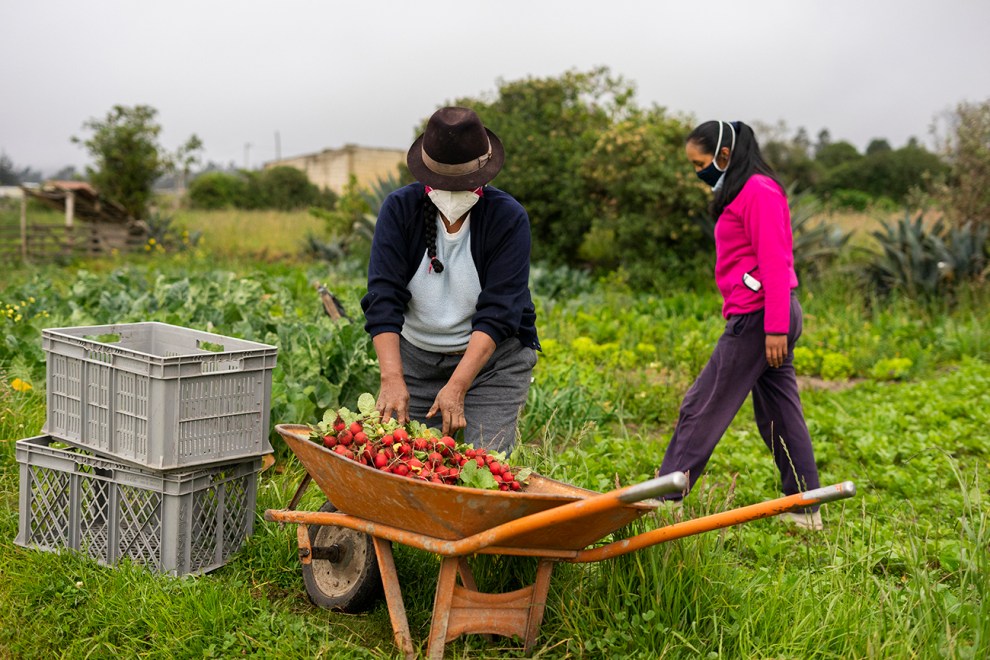
Farmers in Ecuador gather food to deliver to customers via their new delivery system.
Heifer Ecuador
Food at the Front Line: Creating a Food Delivery System
There was no way for small-scale farmers in Ecuador to anticipate the COVID-19 pandemic more than a year ago. But when the coronavirus hit the South American nation hard, these farmers were well-prepared to keep homebound customers fed.
Working with Heifer, they created a whole new delivery system on the fly, putting out catalogs of their offerings, adopting sanitation practices on farms and in production facilities, and partnering with an app developer so urban customers could use smartphones to easily order fresh produce directly from rural farms.
Margarita Haro is part of the El Marco Agricultural Cooperative, which supplies fresh food to some of Ecuador’s fast-growing urban areas.
“When we deliver our products, people tell us we are just as important as doctors who are working nonstop in hospitals while we deliver their food,” she said.
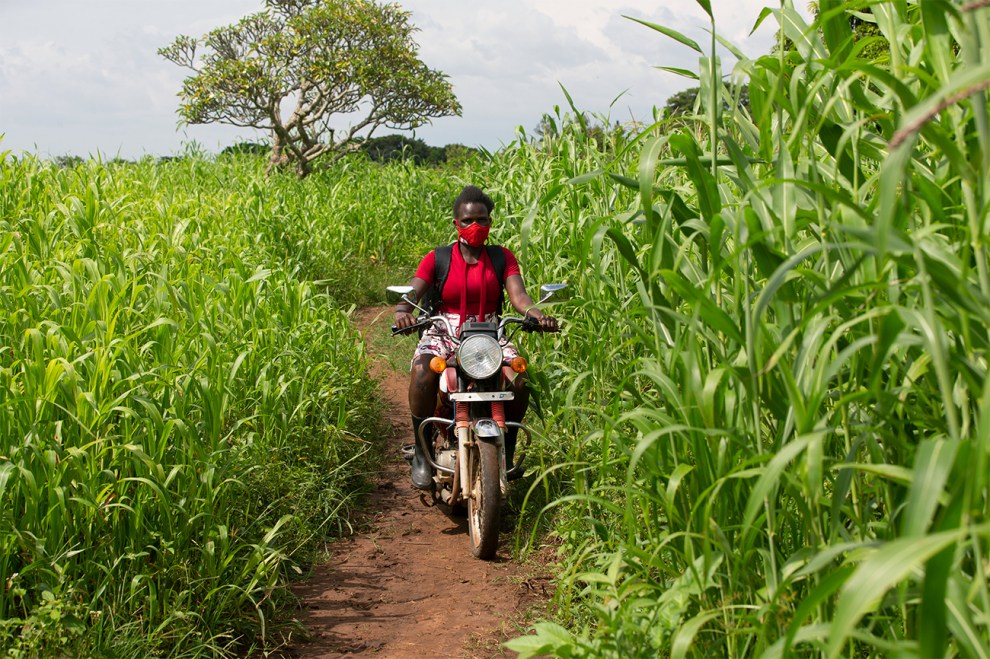
Leah Amongi rides her motorcycle to deliver critical farming supplies like seeds, tools, irrigation equipment, and fertilizers to farmers otherwise unable to access them.
Heifer International
On the Front Line: Leah Amongi
Leah Amongi is a 28-year-old single mother who lives and works in Uganda’s Dokolo District. In 2019, she joined a Heifer Uganda project and was trained as a community agricultural extension worker. Through the project, Heifer Uganda helps young people, many of whom were unable to complete formal educations, earn living incomes through farming. It’s Amongi’s job to teach participants essential skills to build sustainable and profitable agricultural businesses.
With a stop in public transportation, a dusk-till-dawn curfew, and a ban on weekly markets and group gatherings, Uganda’s lockdown kept the COVID-19 cases low but made life extremely difficult for citizens—especially rural farmers.
As restrictions eased and boda bodas, or motorcycle taxis, were allowed to operate again, Amongi hired drivers to ferry her to farmers individually or in groups of five or fewer. Before COVID-19, Amongi paid 10,000 Ugandan shillings ($2.72) per day for a ride to and from the field.
Today, these same rides have easily doubled in price. Unwilling to be gouged and even less willing to leave farmers to fend for themselves, Amongi bought a motorcycle of her own.
“COVID-19 is here to stay, and we cannot allow our farmers to starve,” she said. “I have an obligation to serve even within times of hardship. I look at it like a soldier on a battlefield.”
Both Amongi and the farmers she serves are serious about COVID-19 prevention. Her new ride allows her to deliver critical farming supplies like seeds, tools, irrigation equipment, and fertilizers to farmers otherwise unable to access them. It also helps her make the most of her time. Now, she reaches more people and can work closely with other extension workers to keep young farmers afloat during this crisis.
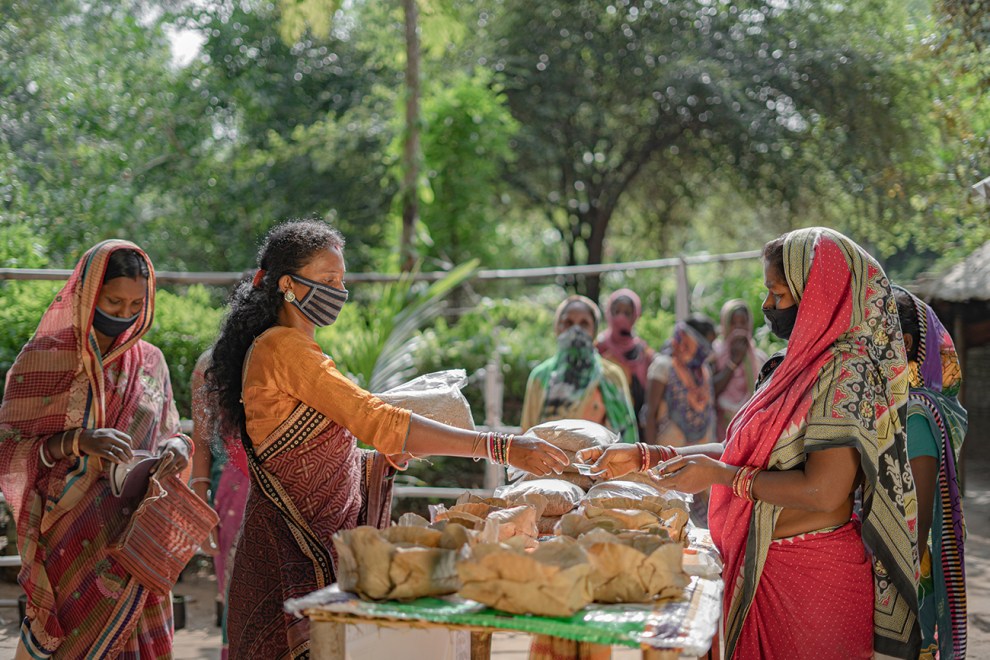
Farmers in Heifer’s Hatching Hope project in India work together so they can continue providing for their families during the pandemic.
Heifer International
Our work at Heifer International helps small-scale farmers and food producers build stability and scale up production and distribution, ensuring they can continue feeding their families and communities. As the repercussions of COVID-19 reverberate, so do the stories of resilience and innovation among our projects. It’s a clear indication of our success equipping families with the tools necessary to create sustainable futures.
But we have something to ask. Our farmers are a force to be reckoned with—but the need is still great. COVID-19 has caused poverty to increase for the first time in more than 20 years, and has brought an onslaught of obstacles and challenges. While hope is on the horizon, developing nations and economies will not recover at the same rate.
Give today and help the families we serve maintain and increase incomes. Your donation gives families the resources, opportunities, and resilience to continue working the front line—and escape hunger and poverty once and for all.